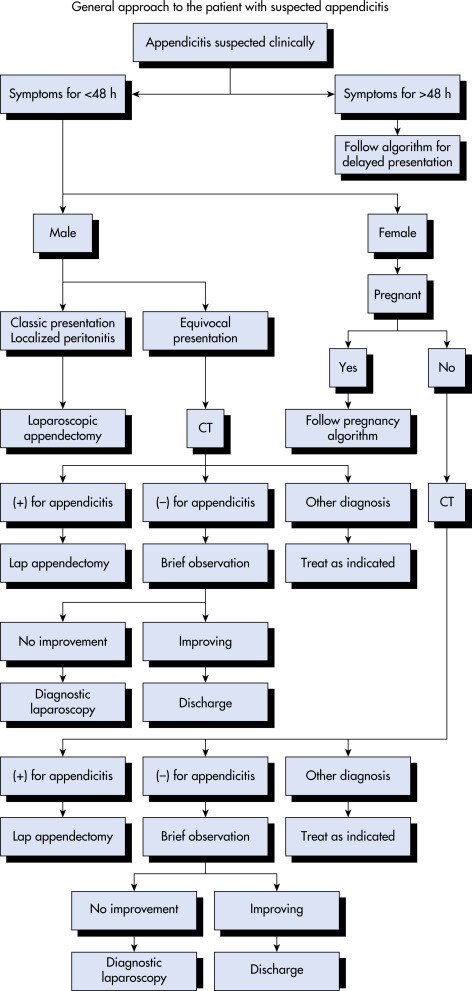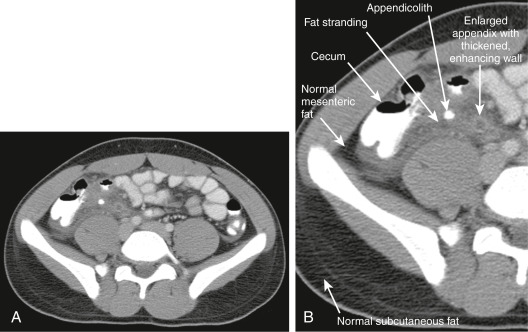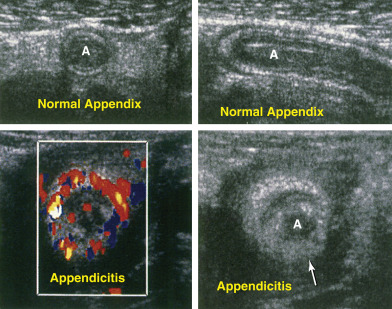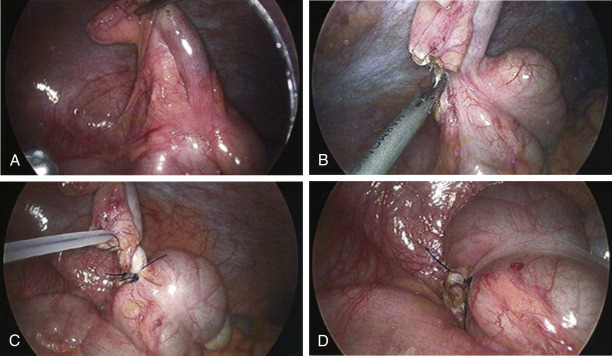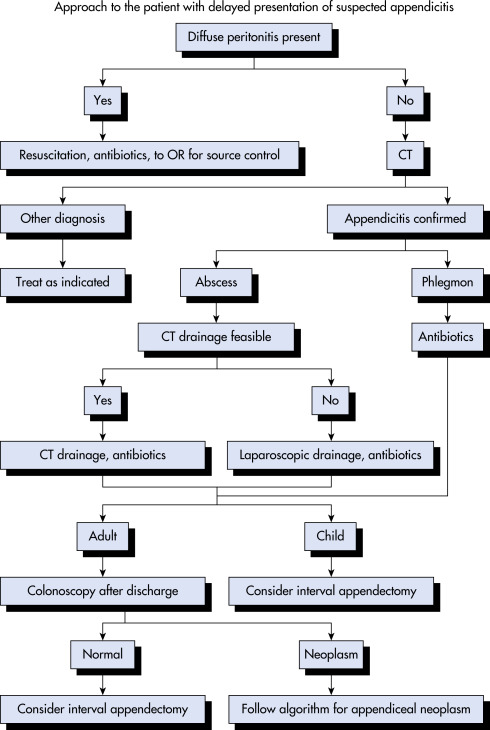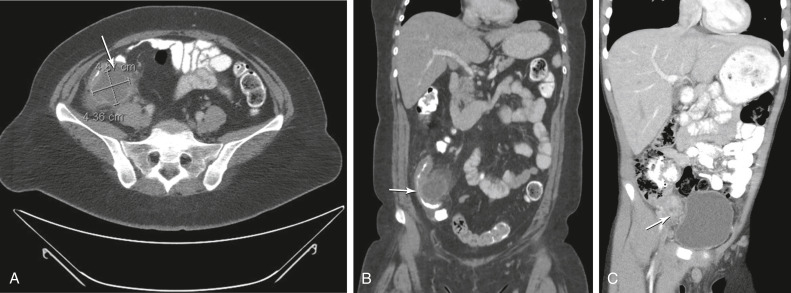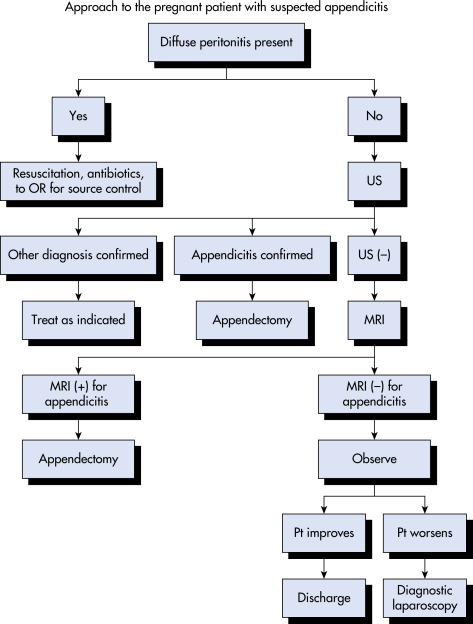AUTHOR: Fred F. Ferri, MD
Appendicitis is the acute inflammation of the vermiform appendix.
| ||||||||||||||||||||||||||||
- Appendicitis occurs in 10% of the population, most commonly between the ages of 10 and 30 yr. Median age is 22 yr. Lifetime risk is 7% to 8%.1
- Approximately 300,000 appendectomies are performed in the U.S. each yr.
- It is the most common abdominal surgical emergency.
- Incidence of appendicitis has declined over the past 30 yr.
- Male:female ratio is 3:2 until mid-20s; it equalizes after age 30 yr.
- In children with abdominal pain, fever is the single most useful sign associated with appendicitis. Vomiting, rectal tenderness, and rebound tenderness along with fever are more indicative of appendicitis in children than in adults.
- Abdominal pain: Initially the pain may be epigastric or periumbilical in nearly 50% of patients; it subsequently localizes to the right lower quadrant within 12 to 18 h. Pain can be found in back or right flank if appendix is retrocecal or in other abdominal locations if there is malrotation of the appendix.
- Pain with right thigh extension (psoas sign), low-grade fever: Temperature may be >38° C (100.4° F) if there is appendiceal perforation.
- Pain with internal rotation of the flexed right thigh (obturator sign) is present.
- Right lower quadrant (RLQ) pain on palpation of the left lower quadrant (LLQ) (Rovsing sign): Physical examination may reveal right-sided tenderness in patients with pelvic appendix.
- Point of maximum tenderness is in the RLQ (McBurney point).
- Nausea, vomiting, tachycardia, cutaneous hyperesthesias at the level of T12 can be present.

